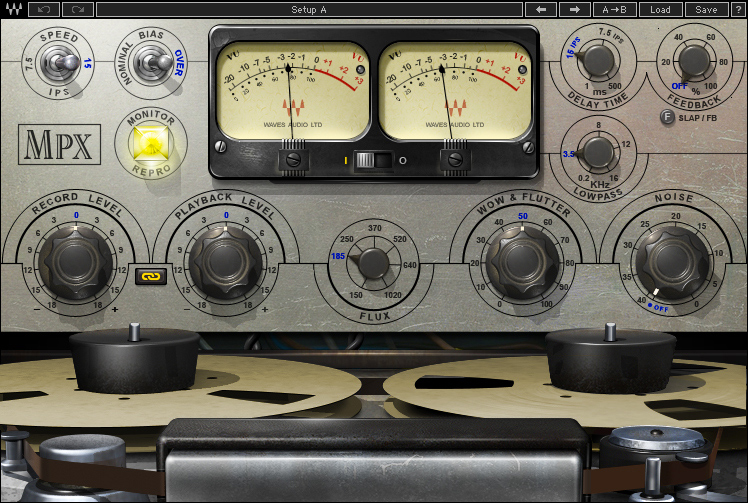| Software Music Machine Archive |
|
MPX Master Tape
|
by Waves
(Waves Website) |
Operating System:
File Size:
License:
Price: USD 149 License Conditions: Registration at the Waves site is required to download the demo version System Requirements: Last Updated: 2011-05-30
For more detail about software : Software Description
|
View MPX Master Tape Screenshot |
Software Description
Developed in association with Eddie Kramer, the MPX Master Tape plugin is modeled on a rare machine consisting of an Ampex 350 transport and 351 electronics.
It has adjustable tape speed, bias, flux, wow & flutter, and noise parameters, to give you comprehensive control over the contours of your sound. It also has a flexible slap & feedback delay, ideal for rock, dance, dub, you name it.
For recording, mixing, mastering, and more, bring the richness and warmth of real tape saturation to your DAW with the MPX Master Tape.
Available in VST, VST3, RTAS and TDM plug-in formats.
Main features:
- Modeled on the Ampex 350/351 1/4" reel-to-reel
- Adjustable tape speed, bias, flux, wow & flutter
- Slap & feedback delay
- Up to 24bit 96kHz resolution
- Mono and Stereo components
- Supports TDM, RTAS, Audio Suite, VST, AU
- PC and Mac compatible
Controls:
- SPEED selects the simulated tape speed.
- MONITOR selects the monitoring mode.
- BIAS controls the level of the ultrasonic bias signal.
- VU METER displays input or output level.
- VU CALIBRATION controls the VU meter headroom calibration.
- DELAY TIME controls the time of the tape delay effect, with settings for 7.5 ips (266 milliseconds) and 15 ips (133 ms).
- DELAY TYPE toggles between delay modes.
- FEEDBACK controls the amount of the delayed output signal.
- LOWPASS controls the LP cutoff frequency on the delay path.
- RECORD LEVEL controls the input level.
- LINK I/O links Record and Playback Levels controls.
- PLAYBACK LEVEL controls the total signal output level.
- FLUX controls the level of simulated magnetic radiation emitted from the record head.
- WOW & FLUTTER controls the speed and gain modulations and fluctuations.
- NOISE controls the level of added modeled noise but not noise modulations and signal additive noise.
Check out this site...
Advertisement